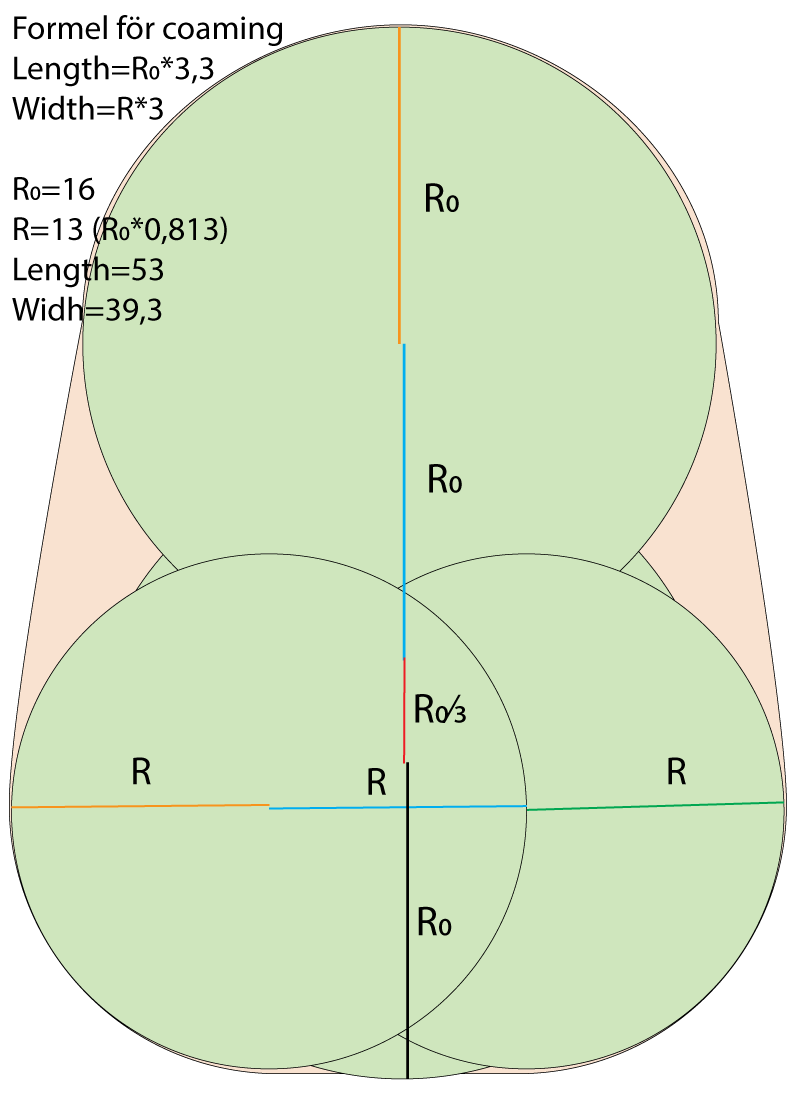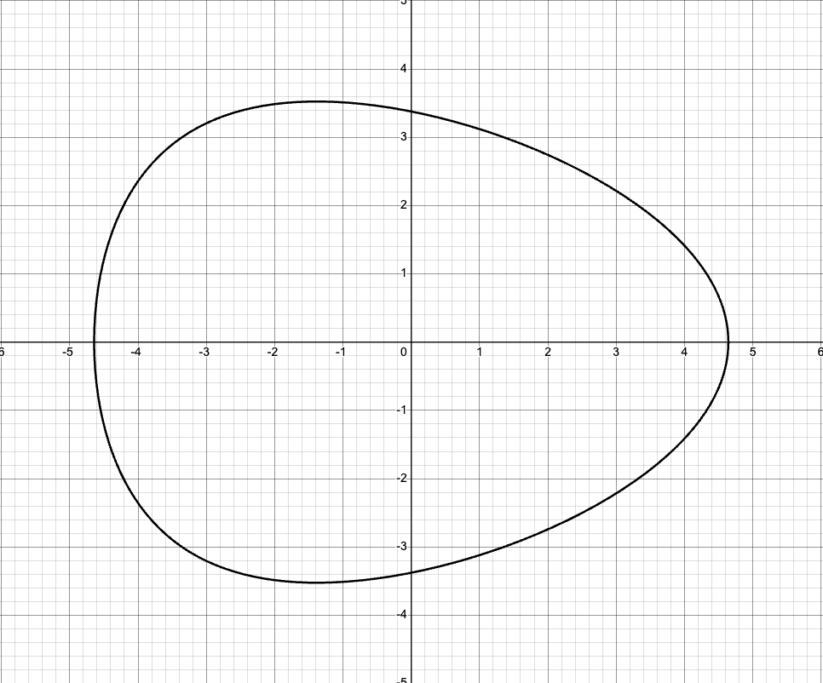I was thinking about how to easily draw and make a jig for a good looking and functioning cockpit coaming and came up with this idea that lends itself to easy drawing with a pencil and a piece of string. The original idea was someone posting on FB how he had made a mathematical calculation for the line for his coaming, but that one had some bends that were too steep for easy wood bending. Couldn’t find that post again.
Here’s my very feeble first take drawn in Adobe Illustrator. It will not help you to a nice shape. Read on and nerd on!
So, if you’re getting confused don’t worry, who isn’t? I shall explain to you in simple words worthy a commoner below! Trust me, I had almost no grades in math from school.


To make your jig, start on your jig’s plywood bottom. Draw a circle with whatever means you have. You can drive a small screw or nail in, tie a string and a pencil to it and make sure the string is 16cm long when you tighten it all. That’s your R0. In our case we use 16cm.
Two and one-third radii below that, drive in another screw or nail. That would approximately be 37,2cm straight down from the first if we used an R0 of 16cm. Draw a fraction of a line at the bottom where the coaming will end. If you got it right, it will be about 53cm back from the top.
Now for some simple math: Take your R0 of 16cm and multiply by 0,813 and you get 13. That is your R value. I just made that up because it’s convenient for an example and it doesn’t make a steeper radius than about 20% smaller than the first. That means you won’t have so much wood cracking!
Ok, so a couple days later and I almost don’t know what this post is about.
…so read on!
MUCH better update
I was looking for a site that can take some numbers and stumbled upon Wolfram Alpha which charges you a lot for a few downloads of Your Own Equations (won’t even post the link). On the other hand The Great Site Desmos doesn’t charge you anything!
Paste in one of these formuli for an egg shape that I found at John D Cooke’s blog and play around with! Desmos even gives you drawbars to tweak, yayy!
plot x^{2}/10+y^{2}(1+0.18x)/4=1
Or a standing egg formula:
2y(x^{2})+e*(y-3)^{2}=5
A more rounded egg shape:
9x^{2}+18y^{2}+2xy^{2}+y^{2}-80=1
Here you can modify the back (bottom of eggshape) with your own:
9x^{2}+16y^{2}+2xy^{2}+y^{2}-144=10 (10 is round, 500 flat in the back)
Now you can make eggshaped ocean or keyhole cockpits! The problem with a simple formula for an egg shape is that the same parameters that control the roundness of the bottom also make it sharper on the top! Dang. So in comes reliable German math and fixes everything. Se screenshots below.
This post is probably to be continued after some more research and a good night’s sleep… I bet I can find a way to do this in Javascript and an svg file but not right now 🙂

